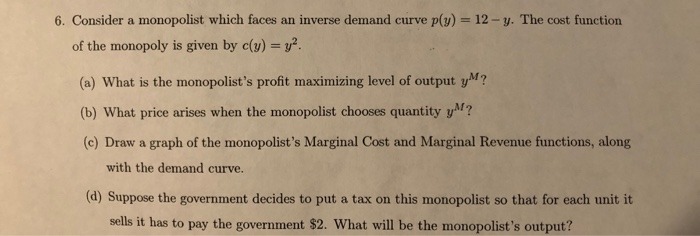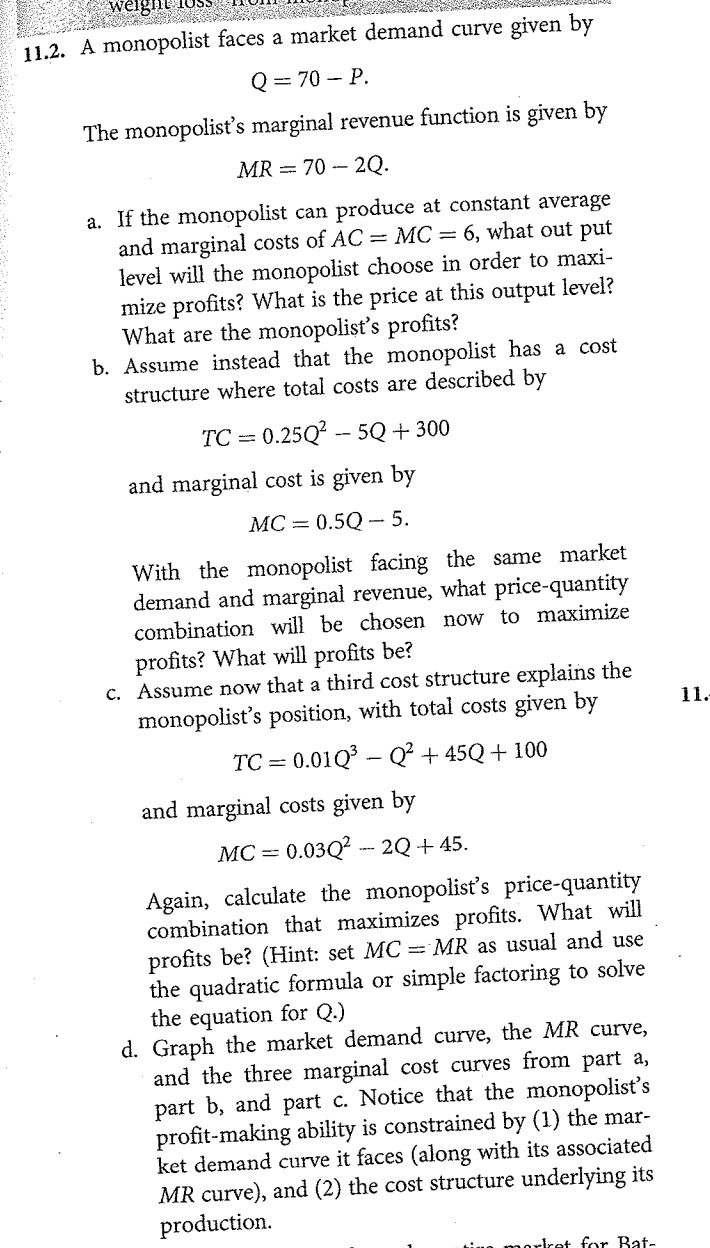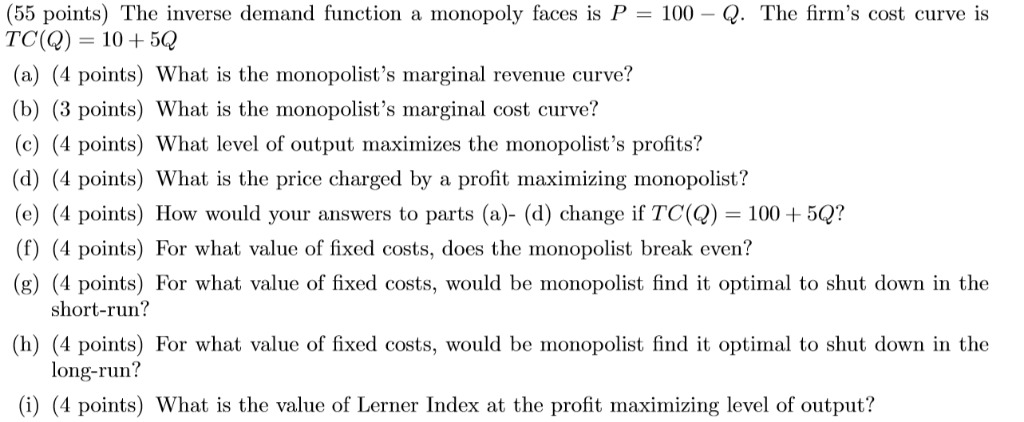A monopolist faces the inverse demand function described by p = 60 -2y where y is output. The monopolist has no fixed cost and the marginal cost is $4 at all levels of output. a. What is the marginal revenue as a function of output level y? (2pt) b. Apply the rule MR = MC to find the monopolist's profit-maximizing output level y . (2pts) c. What is the price that the monopolist will charge? (1pt) d. How much is the monopolist's maximum profit? (1pt)6. Consider a monopolist which faces an inverse demand curve p(y) = 12-y. The cost function of the monopoly is given by c(y) = y?. (a) What is the monopolist's profit maximizing level of output yM? (b) What price arises when the monopolist chooses quantity yo? (c) Draw a graph of the monopolist's Marginal Cost and Marginal Revenue functions, along with the demand curve. (d) Suppose the government decides to put a tax on this monopolist so that for each unit it sells it has to pay the government $2. What will be the monopolist's output?duce at constant average = MC = 6, what out put level will the monopolist choose in order to manna a. If the monopolist can pro and marginal costs of AC 13. Assume instead that the monopolist has a cost structure where total costs are described by TC = new2 5Q + 300 and marginal cost is given by MC = 0.5Q 5. With the monopolist facing the same market demand and marginal revenue, what pricequantity combination will be chosen now to maximize prots? What will prots be? c. Assume now that a third cost 5 monopolist's position, with total costs given by TC=.DIQ3 Q2 +45Q+ 100 and marginal costs given by MC = new2 w so + 45. Again, calculate the monopolist's price--::'|go,aritit}r combination that maximizes prots; What will prots be? (Hint: set MC ='MR as usual and use I the quadratic formula or simple factoring the equation for Q.) d. Graph the market demand curve, the MR curve, ' and the three marginal cost curves from part a, part b, and part c. Notice that the monopolist's prot-maldIIg a'oilit)r is constrained by (1) the mar- ket demand curve it faces (along with its associated MR curve), and {2) the cost structure underlying its tructure explains the 11.- production. 1.2-.- \"null-11+ Fl'1.'l'I Hill'- (55 points) The inverse demand function a monopoly faces is P = 100 -Q. The firm's cost curve is TC(Q) = 10 +5Q (a) (4 points) What is the monopolist's marginal revenue curve? (b) (3 points) What is the monopolist's marginal cost curve? (c) (4 points) What level of output maximizes the monopolist's profits? (d) (4 points) What is the price charged by a profit maximizing monopolist? (e) (4 points) How would your answers to parts (a)- (d) change if TC(Q) = 100 + 5Q? (f) (4 points) For what value of fixed costs, does the monopolist break even? (g) (4 points) For what value of fixed costs, would be monopolist find it optimal to shut down in the short-run? (h) (4 points) For what value of fixed costs, would be monopolist find it optimal to shut down in the long-run? (i) (4 points) What is the value of Lerner Index at the profit maximizing level of output










